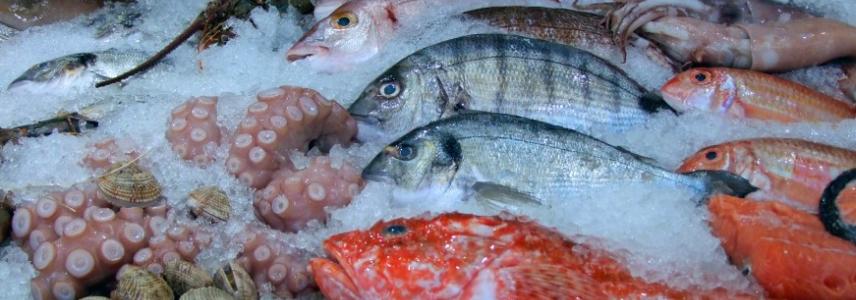European Importers and EU Authorities Increase Focus on the Mislabelling of Added Water in Seafood

The practice of adding water to seafood products is nothing new and some water needs to be added to preserve the desired quality or flavour of the products once frozen. Mislabelling of added water, however, has increased and products are often overtreated and overglazed to control and manipulate the price. Water is added through treatment with phosphates or non-phosphates before freezing, and by glazing the product with a layer of water while freezing. Adding water is not illegal, it only becomes a problem if incorrectly labelled on the final package.
Adding water through phosphate or non-phosphate treatments
The first way to add water to seafood is through treating the product with a mix of salt and phosphates or non-phosphate alternatives. Fish fillets, scallops, and peeled shrimp are tumbled in a mix of water, (non)phosphates and salt for a certain amount of time, in order to let them soak up water. This type of treatment can add five to twenty percent water, depending on the specific product, and it is permitted by the EU regulations as long as no substances are used which are a threat to human health.
EU regulations specify that water should always be mentioned on the ingredient list in the order of its share of the total weight of the product compared to other ingredients. If less than five percent water is added, the order in which water is mentioned on the ingredient list is not important. However, if more than five percent water is added, water should not only be mentioned on the ingredient list, but it also must be clearly stated in the name of the product, so that it reads “shrimp with added water”, for example.
Since 2018, authorities in Germany and the Netherlands have increased their focus on this issue and started to look at how the regulations should be more strictly implemented. Importers argue that if the EU member states want to do something about this issue, it should be done at EU level, with the active cooperation of the third countries where most of the processing is being done. What is clear is that EU authorities will be paying more attention to how added water is labelled and you should be aware of that.
Adding water through glazing
The other way of adding water to frozen seafood is through glazing. To prevent products from dehydration when kept in cold storage, a glaze of anywhere between two and ten percent is needed – everything above that percentage is done in order to lower the price of the final package.
EU regulations do not put a limit of the amount of glazing that is allowed. Nevertheless, once you decide to put 20% on the package while the product inside the package is actually glazed with 25%, then there is a problem and you have committed fraud. Once offered in the market, this product could be around 5% cheaper without losing any margin compared to a product which is correctly labelled.
Underdeclaration of glazing has become a common practice in Europe’s wholesale market. Even though the client may understand the problem, if the price is attractive, the client may decide to go for the cheapest option. Although it is illegal to mislabel, these practices are not a threat to human health. It is considered to be an economic crime only and therefore less of a priority for the authorities. It is mainly up to the industry to act against these practices and action against these practices, led by European industry bodies, is expected soon.
Short-term vs long-term benefits
In the short term, importers who are willing to mislabel are likely to gain market share as they can offer the most affordable prices. However, in the long term, committing this fraud may be a threat to both their business and yours. Once your company is associated with these practices it will be difficult for you to convince others that you are a reliable business partner. While it may take some time for these practices to be banned from the European market, either by action from the authorities or by action from the industry itself, you should avoid being associated with them.
Stay up-to-date
To stay up-to-date on the latest developments in the Fish and Seafood sector, make sure to subscribe to our newsletter by clicking the following link: Subscribe to our newsletter